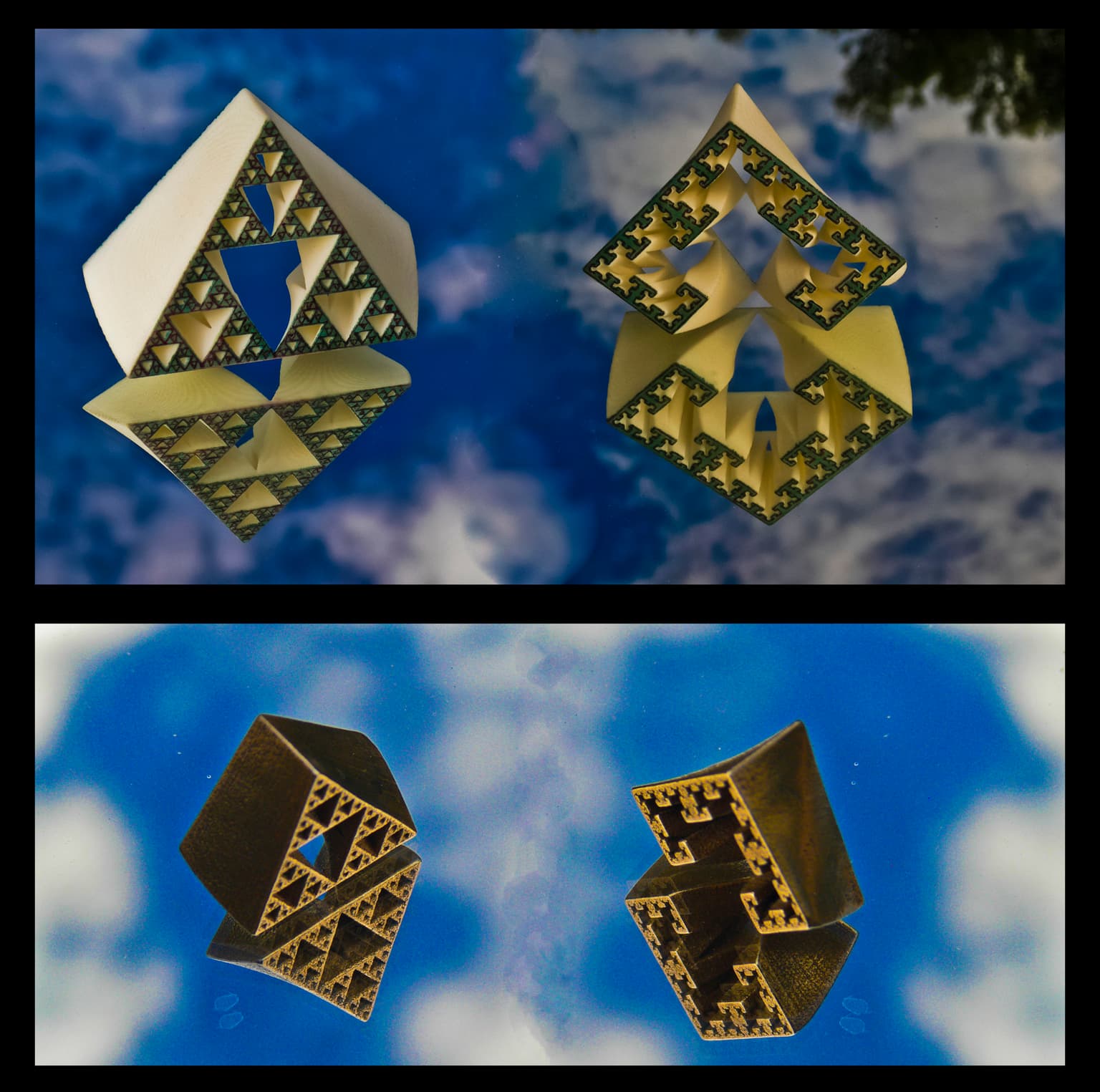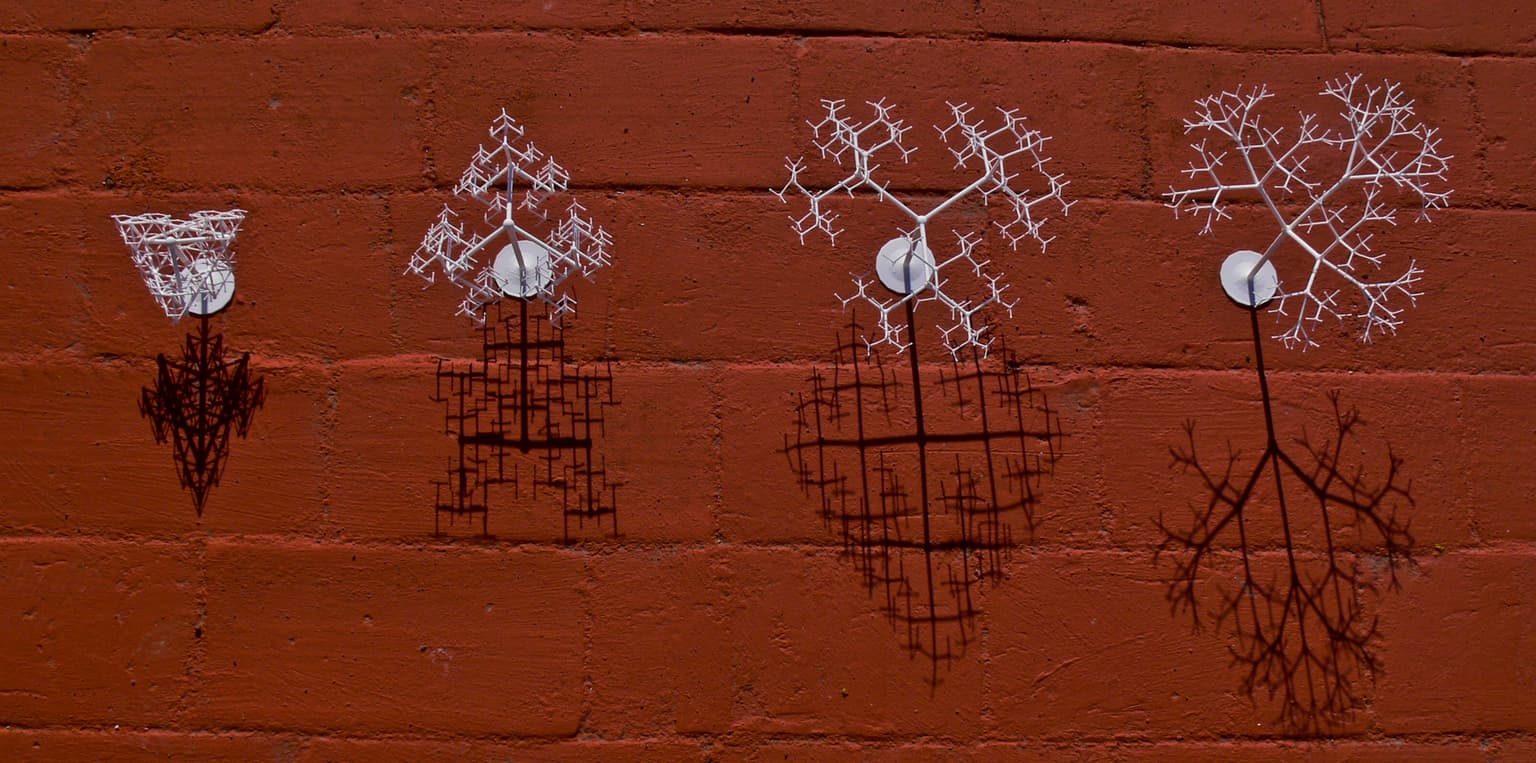2014 Joint Mathematics Meetings
Bernat Espigule
Artists
Bernat Espigule
Mathematical Researcher & Visual Artist
Departament d'Informàtica, Matemàtica Aplicada i Estadística, Universitat de Girona
Sant Climent Sescebes, Catalonia, Spain
Statement
Influenced by the mathematical art of Salvador Dalí, and the original insights into nature's geometry by Antoni Gaudí, I have found in the field of fractals the right tools to realize my artistic ambitions. As I share Robert Fathauer's passion for fractal trees, I decided to carry out a long-term project using Mathematica that shed new light on the topological aspects of infinite symmetric trees. I moved from a two-dimensional generalization of self-contacting symmetric fractal trees, to the exploration of trees in the realm of the third dimension. My artwork shows some of my findings during this transition.
Artworks

The Sierpinski SuperFractal
cm: 7.618 w x 2.1 d x 6 h
Laser sintered nylon plastic and stainless steel
2013

The Ternary Self-Contacting Golden Trees
cm: 18.67 w x 20.148 d x 20.914 h
Designed in Mathematica, printed in laser sintered nylon plastic
2013